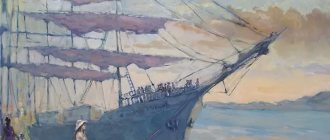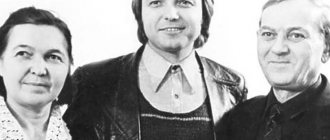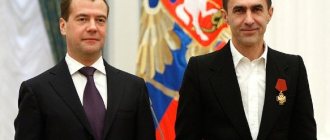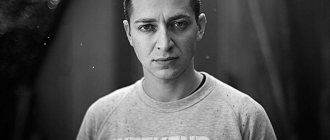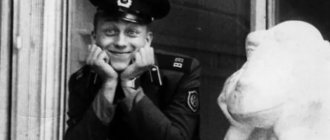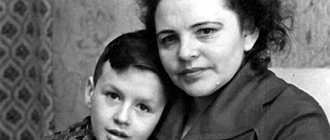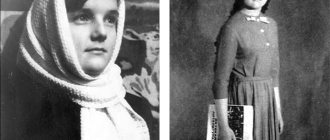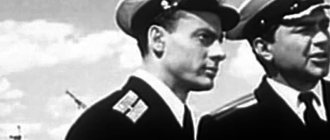Chekhov in Taganrog
Chekhov in TaganrogTaganrog is known to all cultural humanity primarily as the birthplace of the great writer Anton Pavlovich Chekhov. Here he was born and spent almost half of his life. His literary and social activities are inextricably linked with Taganrog. In the vicinity of his hometown, Chekhov saw the unique beauty of the Russian steppe, of which he remained an unsurpassed singer until the end of his life.
Chekhov's attitude towards Taganrog is dear to us as an example of the writer's high civic service to his homeland. “Please do of me and with me everything that can be done of me only for Taganrog, I place myself at your complete disposal,” these words of A.P. Chekhov can serve as an epigraph to all the good deeds of the writer in his native land.
Many years have passed since Chekhov left Taganrog; the city of the writer’s childhood and youth has moved away from us for more than a hundred years. The city has grown, moving far from the steep coastal cape into the Azov steppe. Its straight streets, as in those distant times, stretch to the port; many one-story and two-story houses in the dense greenery of white acacias, chestnuts and poplars have remained unchanged. They, these silent witnesses and bearers of the rich history of Taganrog, preserve its unique appearance.
Chekhov’s places in the city, carefully preserved to this day, are very popular among more than two hundred thousand tourists and excursionists who come to the writer’s homeland every year. All of them are included in the union tourist route - “Our Motherland - USSR”.
The cultural and architectural monuments associated with Chekhov’s stay in Taganrog, in their totality, represent a unique phenomenon. This is a memorial exhibition located in the open air. In the Chekhov complex in Taganrog, every house is a monument, a witness to a certain stage in the writer’s life and his work. The exhibits of the memorial complex bring to our contemporaries the “breath of bygone days”, helping to deeply feel and understand the inner world of the great humanist.
The complex includes the houses of M.E. Chekhov, Papkov, Kobylin, where P.E. Chekhov, the writer’s father, lived and served. A house on the former Police Street, the house of Moiseev, the house of M. E. and P. E. Chekhov, where the writer spent his childhood and youth, the Greek school, the gymnasium where he studied, the theater, the houses of Drossi, Dyakonov, Shedevi, Loboda. These and many other monuments seem to represent in Taganrog the life and creative path of the writer from birth to immortality.
Evgenia Yakovlevna Chekhova
We begin our acquaintance with Chekhov from the place of his birth. “I was born in the house of Bolotov (that’s what my mother says) or Gnutov, near Tretyakov V.N., on Police Street, in a small outbuilding in the courtyard,” Chekhov writes in 1902 to Taganrog head P.F. Iordanov.
Pavel Egorovich Chekhov
In 1904, after the death of the writer, Police Street was renamed Chekhov Street. Currently, this is one of the most beautiful streets in the city and perhaps the greenest. But this is what this street was like: “From Police Street begins the drying, and therefore viscous and lumpy mud, along which you can walk at a walk, and even then with caution,” Chekhov shared his impressions of Taganrog with his sister in 1887. At that time In Taganrog, the only paved area opposite the post office building was considered a landmark. But it was also unsafe to drive on it: “... the finishing slabs protruded from their cells and danced under the wheels of the carriages... sometimes it came to the point that the driver shouted in fear to the cab driver: “Where are you going? Don’t you see that there’s a height there?”
The house in which the writer was born (69 Chekhov Street) is located in the depths of the courtyard. The house was built in the early 50s. 19th century made of adobe. The family of P. E. Chekhov rented it in 1859-1861.
Chekhov family. Photo 1874
The house has three rooms, a kitchen, a small pantry. A modest, but the first independent refuge of thirty-three-year-old P. E. Chekhov, full of hopes of getting rich, who settled in this house with his wife Evgenia Yakovlevna and two sons - four-year-old Alexander and two-year-old Nikolai. In the metric book of the cathedral of the Assumption Church, a corresponding entry was made about the birth of the third son: “One thousand eight hundred and sixtieth year of the month of Genvar, on the seventeenth day, Anthony was born, and on the twenty-seventh, Anthony was baptized. His parents, Taganrog merchant of the third guild Pavel Egorovich Chekhov and his legal wife Evgenia Yakovleena, are both of the Orthodox faith.” The ritual of baptism was performed, as was customary, according to all the rules. The “receivers” were the Taganrog merchant brother Spiridon Fedorov Titov and the Taganrog 3rd guild merchant Dmitry Kirikov Safyanopulo’s wife Elizaveta Efimovna. The sacrament of baptism was performed by “the priest of the cathedral, Mikhail Orlovsky, with deacon Moses Egorov and sexton Fyodor Grigorievich, which is confirmed by a signature and a seal.” Such was the circle of D. E. Chekhov’s acquaintances.
The Chekhovs lived a secluded life, preoccupied with the need to support their growing family and to look decent among their competitors. Pavel Egorovich, engaged in trading and tedious daily calculations, is drawn to art: he loves church singing, sings himself, plays the violin well, draws well, paints icons. Organizes a church choir of blacksmiths in Taganrog. In his spare time, he likes to read the newspaper out loud in the evenings. Reads thoroughly, in detail from the first to the last page. Requires members of the household to retell what they have read. These readings and daily prayers took place in the hall, the largest room of the house. It served simultaneously as a dining room, a living room, and Pavel Yegorovich’s office. In the right corner is a desk with accounts, constant companions of his life, unthinkable without daily accounting of rubles, kopecks, income and expenses from trade. In the left, front corner of the hall there are icons; Pavel Egorovich was a deeply religious man. On the corner table is a family heirloom - an old book “Cheti-Minea”, illuminated by an unquenchable lamp. In the parents’ small bedroom, located next to the “hall,” there is a wooden bed and a chest of drawers with many drawers. Above the bed are portraits of Chekhov's father and mother. The open, handsome face of Pavel Yegorovich is not without an expression of perseverance and perseverance. A former serf, just yesterday a boy in the shop of the millionaire merchant Kobylin, Pavel Yegorovich went through a harsh life school of humiliation, beatings, insults, and pleasing. This school, of course, could not help but affect his children’s upbringing. Neither the older brothers nor Anton could forgive their father, who was guided by the principle: “For one beaten, they give two unbeaten,” and later recalled their childhood with bitterness. But Pavel Yegorovich, himself a gifted person, did everything to bring his children into the public eye. He gave the children an education at the gymnasium, taught music and foreign languages. To maintain the prestige of the family and free children from conscription, he paid a second merchant guild,
The writer's mother, a simple woman with a poetic nature, left the kindest impression on all the Chekhovs. The words “for us there is nothing more valuable than our mother”, “we have talent from our father’s side, and our soul from our mother’s” speak for themselves. Her image passed through the entire life of Anton Pavlovich Chekhov.
At the beginning of 1862, the Chekhov family moved to another apartment. Active and enterprising, Pavel Egorovich is looking for a more spacious apartment for his growing family.
And life in the house continued to flow as usual: the owners of the household, tenants, and house numbers on Police Street changed. And only in 1910, on the 50th anniversary of the writer’s birth, a memorial plaque appeared on the wall of the house, installed thanks to the efforts of the Chekhov circle, organized in Taganrog in 1905 on the initiative of E. M. Garshin, the brother of the famous writer. But the museum there was created only after the October Revolution.
School named after A. P. Chekhova
The first exhibition was opened in 1924. And since then, Chekhov’s House, as the Taganrog residents lovingly called it, has become a world-famous monument of Russian culture. Over fifty thousand people visit it annually. The monument to Chekhov, erected on the territory of the estate of the house, always has fresh flowers - a modest but eloquent evidence of attention and respect for the memory of the great writer.
Not far from Chekhov's House, on Petrovskaya Square, there was an old bazaar, where the writer's father traded in the first years of his life in Taganrog and had a small shop. Nowadays the former market square - the most beautiful square in the city - is called Oktyabrskaya. It is always lively and crowded, especially on summer evenings. In 1973, a monument to V.I. Lenin was erected on the square according to the design of the famous sculptor N.V. Tomsky.
Oktyabrskaya Square
True, more than a hundred years ago this square, now transformed beyond recognition, was also not deserted. In the center of the square stood the Assumption Cathedral, where Anton was baptized. In addition to the cathedral, there were numerous shops and stores on the square... However, we will read about this in the memoirs of the writer’s brother Alexander Chekhov, who skillfully depicted Taganrog during the writer’s childhood and youth. Here “especially deep filth reigned, because all kinds of scraps and garbage were not taken out, but were thrown out without anything right there. The only orderlies of this fertile and fragrant place were stray pigs and dogs... in the dry summer, traders with large pots sat right on the ground, selling borscht and other hot food. It happened that a whirlwind would sweep over the bazaar, raising an immense column of dust, and the traders would just begin to cover their borscht with bags. And straw, manure, and all sorts of things are already floating in the borscht. And nothing - we ate...”
The right corner of the square was occupied by various coffee shops and taverns, very dirty and of rather dubious reputation. Here, more often than anywhere else, ominous cries of “Guard!” were heard in the evenings and at night.
Looking today at this well-groomed, landscaped modern square, at the sculpture of the leader and remembering the picture drawn by A. Chekhov, you realize the colossal changes that have taken place on this land...
The city has also changed in the area of the old Peter the Great's fortress, where there is a monument to the founder of the city - Peter I. And here the new city crowds out the old one, bursts into its quarters, replacing the ancient, dilapidated shacks, rising with multi-story columns stretching into the blue of the Azov sky. The houses with shutters hidden in the greenery of the trees became quiet, frozen in anticipation. Few of them remember the time when the ramparts of the fortress were a noticeable detail of the landscape of Taganrog in the 60s. Holes were dug into the shaft to serve as housing for the poor.
The remains of the ramparts of the fortress are now almost invisible and only the names of the lanes - First Fortress, Second Fortress - remind us of the time when Peter I set foot on this land.
Speaking about Taganrog of Chekhov's time, talking about its shacks, the dirt that accompanied the life of the urban poor, our story would be incomplete if we did not talk about the city, the mansions and villas that have survived to this day, the city that contemporaries called “little Eldorado” . Trying to outdo each other, merchants, entrepreneurs, and city fathers built magnificent mansions in Taganrog. Here every house has a history, its own face. I. D. Vasilenko in his autobiographical story “The Life and Adventures of Zamorysh”, through the mouth of one of the characters in the story, gives a figurative description of city buildings. “Probably because all sorts of people worked here, and different houses were built... Just like people. Look to the right: it's a gloomy old man! Look, how he frowned! He is tired of everything, and he only wants peace. And this is a young girl. I put on a white dress and look in the mirror and can’t stop looking at it. And this is a millionaire merchant who has grown fat on pancakes with sour cream and black caviar, and you can’t tell where her face is and where something else is. And this is a businessman. He doesn't need beauty. For him - so that it is strong, reliable, indestructible forever.”
On an elevated place, at the Vorontsovsky descent to the sea, bending down Grecheskaya Street, there is a house that belonged to the priest F.P. Pokrovsky (431 Komsomolsky Boulevard). A.P. Chekhov wrote to the publisher of the St. Petersburg newspaper “Novoye Vremya” A. Suvorin: “The pseudonym of A. Chekhonte is probably both strange and sophisticated. But it was invented at the dawn of my foggy youth, I got used to it, and therefore I don’t notice its strangeness...” The author of this pseudonym is the law teacher F. P. Pokrovsky, one of his favorite gymnasium teachers. A man of progressive convictions, this “hussar in a cassock,” as one of his contemporaries put it, paid more attention in his lessons to literature and philosophy than to the law of God, giving his students books that were considered harmful at that time. The high school student Chekhov often visited this house and later, being a famous writer, spoke warmly of Pokrovsky and sent him books with dedicatory inscriptions.
If you go down the former Palace Lane to the neighboring street named after Schmidt (formerly Malo-Grecheskaya), you can get acquainted with another house, 16, which knew the Chekhovs. Built in the style of Russian or provincial classicism with a smooth facade, decorated with a small portico of six Doric columns, it will immediately attract your attention with its emphatically prominent old-fashionedness against the backdrop of rising snow-white multi-story boxes that violate the patriarchal comfort of this quiet street.
The memories of Mikhail Pavlovich Chekhov, the writer’s brother and his biographer, are associated with the house. They date back to the Crimean War, when Taganrog was subjected to severe artillery shelling from the sea. The streets adjacent to the shore - Grecheskaya and Malo-Grecheskaya - were especially damaged. Together with other Taganrozh residents, the residents of this house quickly fled to escape the shelling. They put Evgenia Yakovlevna, her mother and sister on the cart, which Pavel Yegorovich ordered on the move, they left everything and went to the Krinichnaya settlement, to see their grandfather. As it happens in a commotion, Evgenia Yakovlevna’s mother kept remembering the whole way about the chicken that she cooked in a Russian oven and left it like that: “The chicken, my chicken will be steamed there.”
This was almost one hundred and thirty years ago, but even now you can see on Taganrog houses traces of the brutal bombing of an unprotected city.
The steep coast in this area has several descents connecting the city with the embankment. The embankment, or exchange (as it was called in those days), was a very busy place during the navigation period. But even in winter it was not deserted. Young people and adults held speed skating competitions on the slopes. The slopes were watered, and at the foot they built a barrier of snow, from which they made a multi-meter air jump and braked sharply, because there were customs buildings nearby on the embankment. Many spectators usually gathered on the mountain to watch the dizzying competitions. Chekhov painted a picture of such competitions in his story “A Joke.” There is a lot in it from Taganrog, from the school mischief of Anton Chekhov: “We are standing on a high mountain. From our feet to the very ground stretches a sloping plane, into which the sun looks like in a mirror. Near us is a small sleigh, upholstered in bright red cloth...”
Pushkinskaya embankment
The city park, founded in 1806, has been and remains a favorite vacation spot for all generations of Taganrozh residents.
In the 60-70s, when Anton Chekhov lived in Taganrog, the garden was located on the very outskirts of the city. Between the garden and the barrier there was a vacant lot, and behind the barrier there were thick ears of wheat. Anton and his brothers went there for a walk and returned home with bouquets of blue flowers. Now, looking at this built-up central part of the city, it is difficult to imagine and believe that they once plowed and sowed here. And in his youth and subsequently, every time he came to Taganrog, Chekhov went to the park, or, as it was previously called, the garden. In one of his letters he writes: “I was in the garden. Music was playing. The garden is magnificent." In this garden, where Chekhov half-jokingly, half-seriously dreamed of being a gardener in his old age, an orchestra constantly thundered in the evenings, and in winter there was a skating rink. His impressions from the garden were inspired by his lines in the story “Both this and that.” The park has now remained the same as before, in its constant pull of Taganrozh residents here, only it has grown even more and has been improved.
On Grecheskaya Street (now III Internationala Street), in house No. 54, in a former parish school, Anton Chekhov began his literacy training.
Chekhov's father, who sought to give his children an education, at one time wanted them to follow the Greek line and graduate from the University of Athens. The fact is that in Taganrog in the 19th century there lived many foreigners, mostly Greeks, in whose hands almost all foreign trade was concentrated. There were many export offices in the city, whose owners were millionaires - Vagliano, Kandelaki, Alferaki, etc. Taganrog had commercial ties with southern Europe for a long time. Port quarters with coffee shops for foreign sailors complemented the appearance of the city, its exotic appearance. Many street names preserved in the memory of old-timers testify to the former dominance in the city of foreigners who made up the “high society”: Jerusalemskaya, Catholic, Italian Lane, Greek Street. The life of foreign families seemed mysterious, unattainable, tempting. Associated with them were fantastic stories about Greek millionaires engaged in robbery and smuggling, such as Varvatzi, who was once a pirate and robbed merchant ships on the Mediterranean Sea, Mark Vagliano, who hid his contraband goods in dungeons near the harbor, Denaldo who managed to transport counterfeit hundred-ruble bills in pencil barrels from abroad
Anton eagerly went to the Greek school (III Internationala St., 54), where education was conducted in Russian and Greek. Students with good hearing and voice were required to sing in the Greek church. The ruler and rod were constantly in use by the semi-literate teaching staff. Having once arranged a home exam, Pavel Yegorovich was amazed at the modesty of knowledge of his sons, who studied for almost two years at this school. Nikolai was still able to read a few words from the Greek text, but Anton could not even manage that. Much later, in a conversation with his elder brother Anton Pavlovich, Fr. There is nothing left about this period of study in the family except anecdotal memories. With great difficulty you will now find the building where Anton Chekhov’s student years began, where he studied with the children of shopkeepers, clerks, and skippers. It is overgrown with extensions, porches, and is blocked from the street by a large multi-story building. And it seems that with great reluctance it is holding on to the edge of a cliff, with difficulty carrying its more than one and a half century unique history: the history of a parochial school that has become a thing of the past with teaching in a Russian city in Greek.
Having lost faith in the hope of providing his sons with a quick career in the offices of wealthy Greeks, Pavel Yegorovich sends his children to the local classical gymnasium.
The school where A.P. Chekhov studied (now the State Literary Museum of A.P. Chekhov)
The Taganrog Gymnasium (Oktyabrskaya St., 9) gave Russia remarkably gifted and outstanding figures - A. P. Chekhov and his brothers - Alexander (writer), Nikolai (artist), Mikhail (writer), poet N. F. Shcherbina, Ukrainian ethnographer and writer A. A. Korsun, Itinerant artist K. A. Savitsky, bridge builder Professor N. A. Belelyubsky, writer and ethnographer, organizer of the underground printing house “Narodnaya Volya” V. G. Tan-Bogoraz, one of the first artists of the Moscow Art Theater A. Vishnevsky, composer S. M. Maikopar, academician S. D. Balukhaty and others. Without a doubt, the gymnasium had a significant influence on the cultural development of the city. The gymnasium had a library, a bookstore, a historical and geographical museum, a meteorological station, and an extensive botanical garden.
During the troubled years, filled with romance and the pathos of the revolutionary struggle, there was a cavalry school in the gymnasium building, where S. M. Budyonny, K. E. Voroshilov, E. A. Shchadenko stayed.
From 1934 to 1975, this building housed one of the best schools in the city, worthily bearing the name of A.P. Chekhov. In 1975, the construction of a new school on the adjacent territory was completed, and the old building of the gymnasium, where Chekhov studied from 1868 to 1879, was transferred to the literary museum of A.P. Chekhov, previously located in the library named after. A.P. Chekhov. Now it is preparing to open a literary and memorial exhibition dedicated to the life and work of the writer, his connections with his hometown, and the perpetuation of his memory in our country and abroad. In the gymnasium, the assembly hall, vestibule, gymnasium classroom, punishment cell, and second floor corridor have been restored to the same form as they were in those distant times. At the exhibition, visitors will be able to see the writer’s early autographs, his collections, and photographs of prominent cultural figures. The writer's personal library (more than 600 volumes) is stored and exhibited in the museum. Of great interest to visitors are the writer’s personal belongings, donated to the museum by Chekhov’s sister Maria Pavlovna. Drawings by Nikolai Chekhov and paintings by famous artists attract attention.
Living room
In the same building, expanded by the buildings of the left and right wings, there are children's sports and art schools, a mobile department of the library named after. A.P. Chekhov.
Not far from the gymnasium building there is a house where the Chekhovs lived from 1869 to 1874 (Sverdlova St., 100). The move to it was connected with the trading interests of Pavel Yegorovich Chekhov. In connection with the construction of the station and railway, city trade moved from Petrovskaya Square to Yarmarochnaya Square, where a large bazaar was formed and the Nikolskaya and Assumption fairs were held annually. “At that time...” recalled the writer’s younger brother Mikhail Pavlovich, “we lived in Moiseev’s house on the corner of Monastyrskaya Street and Yarmarochny Lane (now Gogolevsky Lane and A.D. Sverdlova Street) almost on the very edge of the city. We occupied a large two-story house with a yard and buildings. Downstairs were our father’s store, kitchen, dining room and two more rooms, and upstairs lived our whole family...”
Chekhov's shop
Above the entrance to the shop there was a sign: “Tea, sugar, coffee and other colonial goods,” and a little lower there was an inscription: “Drinking and takeaway.” It meant that there was a cellar with wines and vodka next to the shop. The years Chekhov lived in this house were perhaps the most difficult of Anton Chekhov's entire childhood. Pavel Egorovich demanded that the children constantly participate in the nightly rehearsals held in the house; he forced the children to sit in the shop for days, watch the trade, and weigh out the goods. Impressions from life in Moiseev’s house are reflected in such works known to readers of almost all ages as “Vanka”, “I Want to Sleep”, “Three Years”, etc.
Shop trading floor
Meanwhile, Pavel Yegorovich Chekhov's trading affairs were getting worse and worse. Opening a shop at the station, where he forced his sons to be on duty, did not help either. In an effort to obtain some more stable source of income, Chekhov’s father is undertaking the construction of his own house in order, following the example of other merchants, to rent out part of it.
In 1874, a house appeared on the remote Elizavetinskaya Street (now R. Luxemburg St., 75). It is being built on land acquired back in the forties by Chekhov’s grandfather Yegor Mikhailovich, who came to Taganrog after his liberation from serfdom. But due to a lack of funds, the house turns out not to be the way Pavel Yegorovich intended it. It is cramped for a large family forced to huddle in four small rooms. Downstairs, in the basement, they placed the widowed aunt Fedosya Yakovlevna and her son. The outbuilding was rented out to tenants. Pavel Yegorovich's dream of owning his own home came true. However, from this time the ruin of the family begins. The sum of 1,500 rubles taken by P. E. Chekhov from the Mutual Credit Society on the security of home ownership, failures in trade led the family almost to poverty, to the loss of their own home. After graduating from the gymnasium in 1875, Alexander and Nikolai left for Moscow to study. In 1876, Pavel Egorovich, forced to admit that he was an insolvent debtor, closed his shop and, fearing to end up in debtor's prison, secretly left for Moscow. Evgenia Yakovlevna and her children, Maria and Mikhail, soon followed him. Anton remained in Taganrog alone until he graduated from high school in a house that had been transferred to the former tenant G. Selivanov for debts. Chekhov is intensely engaged in self-education, making up for lost time in the lower grades, trying to write, going to the theater in his free time from lessons and tutoring, selling off his remaining property in order to send the pennies he got to his family in poverty in Moscow. He often goes hungry, dines with relatives, with his uncle Mitrofan Yegorovich, who remained until the end of his days in Taganrog, in the house bought by his grandfather in 1840. And then, having left for Moscow, Chekhov, occasionally coming to his native Taganrog, always meets with his uncle, at who always receives a warm welcome and understanding.
The house, located on the outskirts of Taganrog street (R. Luxemburg St., 75), can rightfully be called the family nest of the Chekhovs. And now Chekhov’s distant relatives live there: his great-niece Tatyana Vladimirovna Chekhova also hospitably welcomes fans of the great writer’s talent.
Taganrog Drama Theater named after. A. P. Chekhova
The Taganrog theater, located on the central street of the city - Street named after, played a big role in Chekhov's life. Lenin (formerly Petrovskaya). On the way to the theater we will get acquainted with several more memorable places associated with the name of Chekhov.
Along Turgenevsky Lane we will go down again to Chekhov Street, 73. On the right on the corner there is a house that belonged to A.F. Dyakonov, who in many ways served as the prototype of the famous “man in a case” - Belikov. A little further, on the right at the corner of Ispolkomovsky Lane, there is a house that once belonged to the doctor P. Shedevi. The young man graduated from the university in 1865, first worked as a zemstvo doctor, and was fond of the People's Will.
After the defeat of the Taganrog organization “Narodnaya Volya”, he retired from public affairs and began private practice. He built a mansion in Taganrog and bought a garden. By saving money, he soon became the owner of substantial capital. He began to subscribe to a reactionary newspaper. In Taganrog, Chekhov met him and saw firsthand the oppressive power of the province, depriving any even more or less thinking person of his wings. It is possible that the spiritual degradation of this person was the impetus for writing the story “Ionych”.
Anton Pavlovich in his youth
Police Street (now Chekhov Street) can rightfully be called a literary street. On this street there is a house where the famous poet N.F. Shcherbina lived, whose work was well known to Chekhov. The writer I. D. Vasilenko lived here almost his entire life.
Chekhov Street in the old part of the city ends in Red Square. You will definitely pay attention to the architectural landmark of the square - the Gostiny Dvor, which faces the square. In the living room row on the corner of Krasny Lane from 1874 to 1876 there was a shop of P. E. Chekhov. It was located not far from the district school (now school No. 9). In the living room there is also a trading shop of a distant relative of the Chekhovs, I. I. Loboda. Anton often resorted to him for material for sewing clothes in the tailor's workshop at the district school, where he studied the craft with his brothers. The inhabitants of the surviving Loboda house (Sverdlova St., 90) were immortalized in the famous cartoon by Nikolai Chekhov with text by Anton, published in the magazine “Spectator” under the title “Wedding Season”.
Monument to A.P. Chekhov. Sculptor I. Rukavishnikov
Now on Red Square in front of the park there is a majestic sculpture of A.P. Chekhov, facing the street leading towards the sea. The monument was erected to mark the centenary of Chekhov’s birth. The sculpture was cast according to the design of I. M. Rukavishnikov. Chekhov, embodied in bronze, settled forever in Taganrog...
The Taganrog theater is inseparably linked with the name of Chekhov. Anton Pavlovich once wrote: “I’m happy for Taganrog, they love theater and understand it.”
According to the memoirs of the writer’s contemporaries, Anton Chekhov first visited the Taganrog theater as a twelve-year-old teenager, and from that moment the future author of “Three Sisters” began his passion for theater, which continued throughout his life.
Family nest of the Chekhovs
I. P. Chekhov, the writer’s younger brother, recalled: “We usually went to the theater together. Tickets were taken to the gallery... Walking from the theater, all the way we did not notice either the bad weather or the uncomfortable pavement, we walked along the street and animatedly remembered what was happening in the theater. And the next day Anton Pavlovich acted it all out.”
It was not only the Taganrog theater that influenced the formation of Chekhov the writer and Chekhov the playwright. Anton Pavlovich then himself influenced the development of theatrical art in Taganrog. In 1890, the play of the great countryman “The Proposal” was staged for the first time on the stage of the oldest theater, and two years later - “The Bear”, written by Chekhov especially for N. N. Solovtsev, the first leading actor, whom the writer met while still a high school student . For 14 years, starting from 1890, the theater became truly Chekhovian: plays by Anton Pavlovich were staged on its stage (1896 - “The Seagull”, 1898 - “Uncle Vanya”, 1899 - “Ivanov”, 1901 - “Three Sisters”) ", 1902 - "Wedding", 1904 - "The Cherry Orchard").
The theater preserves and multiplies the wonderful Chekhov theatrical traditions. In 1944, the theater was named after Chekhov and a memorial plaque was installed. On November 16 of the same year, a drama troupe consisting of graduates of the State Institute of Theater Arts named after A. V. Lunacharsky arrived in Taganrog for permanent work and on January 10 opened its first season with the play Chekhov's "Three Sisters". This play was staged with the same cast 25 years later, in 1970.
Next to the theater on Lenin Street (formerly Petrovskaya) there is the city library named after Chekhov. The building was built in 1914 according to the design of Chekhov’s friend, Academician F. O. Shekhtel. The library has over 400,000 volumes of books. The great writer made an invaluable contribution to the organization and creation of the library’s book fund. For many years, he sent boxes with a wide variety of books to Taganrog - fiction, socio-political, agricultural. The last time Chekhov sent a batch of books to Taganrog was a month before his death. On June 12, 1904, he writes from Badenweiler to the Taganrog head Iordanov: “Please tell me whether you received the book parcel I sent you from Moscow in early June? I left the books in Moscow with a request to send them immediately, and I left.” Let’s continue his thought: “He left to die...” - he admitted this to his family and friends, and we will appreciate the greatness of Chekhov’s civil feat. In his will, drawn up during one of his frequent bouts of illness, he writes, addressing his sister: “After my death and the death of my mother, everything that turns out to be, except income from plays, goes to the disposal of the Taganrog city administration for the needs of public education, while income from plays - to brother Ivan, and after Ivan’s death - to the Taganrog city administration for the same needs for public education.” All his life, struggling with self-satisfied satiety - the ideal of philistinism, Chekhov does everything possible so that the provincial town begins to live a full-blooded life, in which there would be no place for either the Ionychs or the Belikovs.
Museum 'Chekhov's House'
You have completed your acquaintance with Chekhov's places in the city. Go through them mentally again to commit them to memory. Chekhov's house, Moiseev's house, P. E. Chekhov's house are the places where the writer spent his childhood and youth. Greek school, gymnasium, where he embarked on the path of a trading career and received a general education. Drossi House, the theater, where he mastered the basics of artistic, directing, and dramatic talent; park, embankment, where he rested and spent his free time; library, monument to Peter I, which appeared in the city thanks to the attention of Chekhov; the Gordon hospital, where Anton Pavlovich Chekhov tried to improve his failing health; the Demetti monument is one of the few surviving Italian monuments associated not only with the history of Taganrog, but also with the work of A.P. Chekhov; The Literary Museum of A.P. Chekhov is the custodian of the writer’s heritage. Visit it, get in touch with the world of Anton Pavlovich Chekhov's childhood and youth. And leaving the museum on the busy Lenin Street, joining the lively stream of people, you will be convinced that modern Taganrog lives a hectic, intense life. A.P. Chekhov’s predictions are coming true that “there will be... huge, magnificent houses, wonderful gardens, fountains, extraordinary, wonderful people here.”

